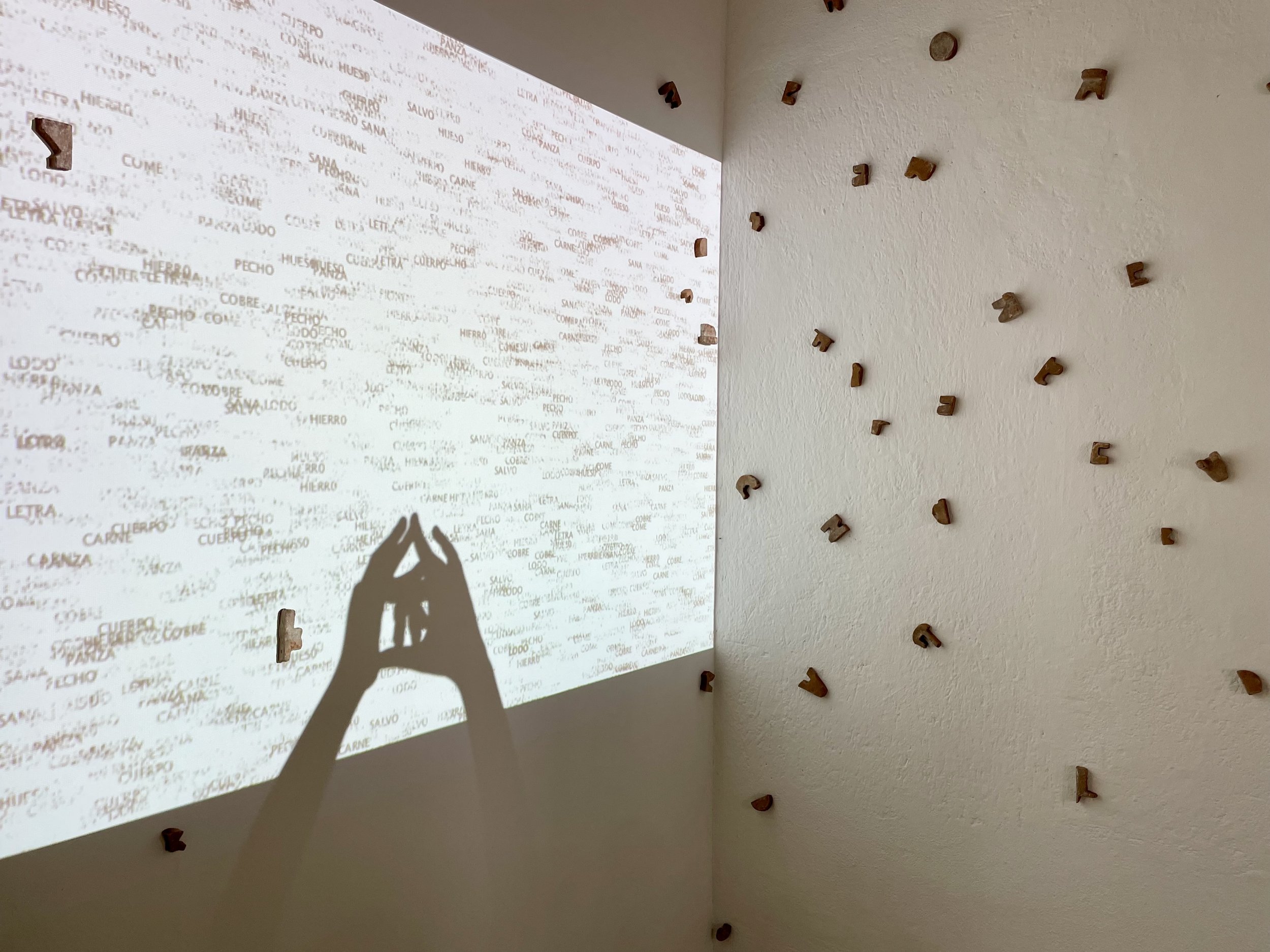CARNE, COBRE / CUERPO, COME, 2021-2022
Carne, Cobre / Cuerpo Come investigates how language lives in the body—how it mediates experience and shapes the psyche through movement, memory, and sensation. Recent science suggests language evolved from neural systems tied to physical movement—words are processed like 3D objects, and thinking itself mimics motion. From this lens, words are not just tools but embodied experiences.
The project also considers language as an epigenetic force. Just as genes can be activated by lived experience, words can leave marks on the body, influencing identity and perception from the inside out. Noam Chomsky’s theory of recursion further suggests we’re born with a linguistic blueprint that shapes how we interpret and complete patterns—making language both innate and endlessly generative.
Lastly, the works gesture toward the body’s connection to the earth through materials—calcium in bones, copper in muscles, iron in blood—bridging language, biology, and ritual.














